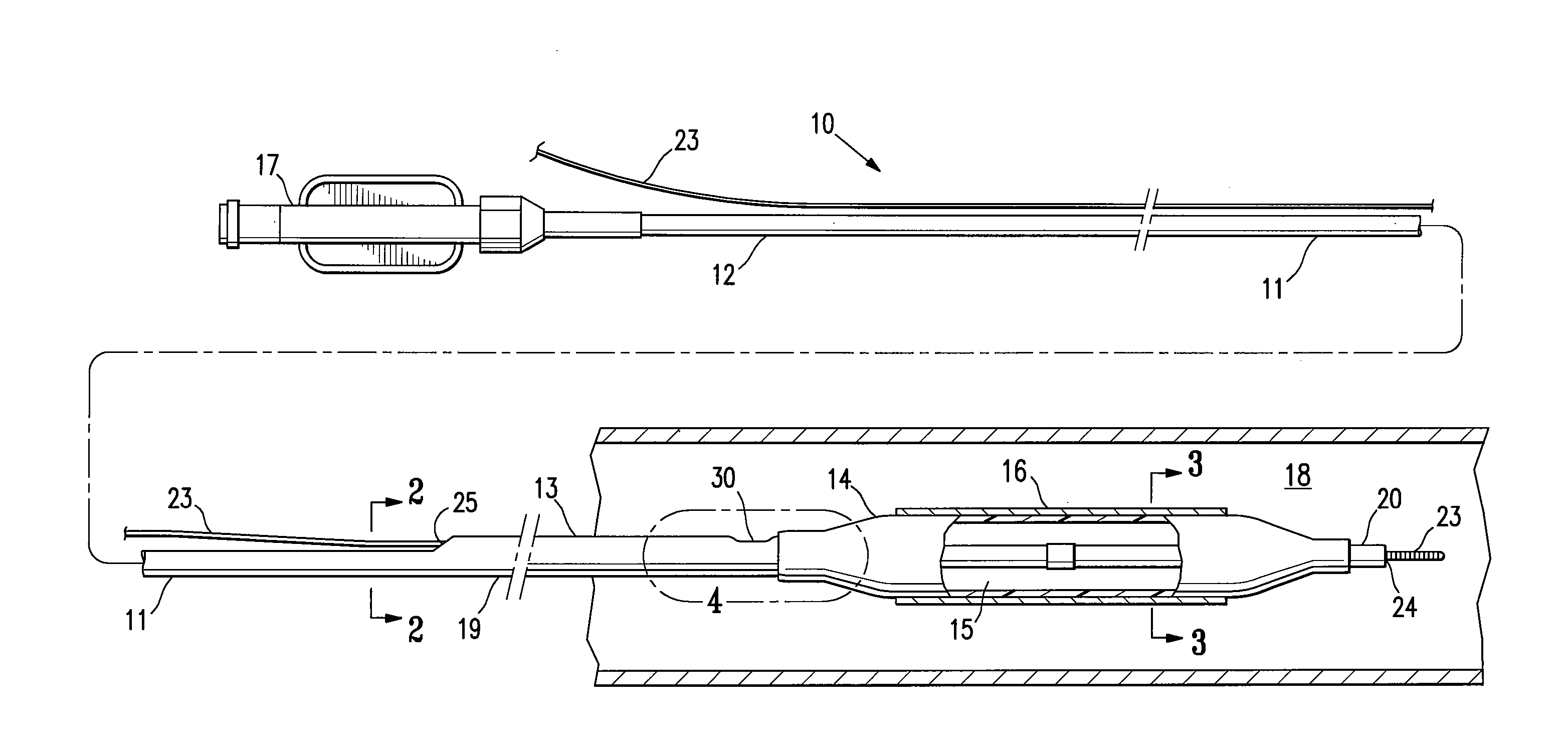Balloon catheter having a shaft with a variable stiffness inner tubular member
a catheter shaft and variable stiffness technology, applied in the field of catheters, can solve the problems of low bending stiffness of the catheter shaft and inhibit the positioning of the balloon across the stenosis, and achieve the effects of reducing the wall thickness, increasing the wall thickness, and reducing the axial compression stiffness
- Summary
- Abstract
- Description
- Claims
- Application Information
AI Technical Summary
Benefits of technology
Problems solved by technology
Method used
Image
Examples
Embodiment Construction
[0020]FIG. 1 illustrates rapid exchange type balloon catheter 10 embodying features of the invention. Catheter 10 generally comprises an elongated catheter shaft 11 having a proximal end, a distal end, a proximal shaft section 12 and a distal shaft section 13 at the distal end of the proximal shaft section, and an inflatable balloon 14 on the distal shaft section. The shaft 11 has an inflation lumen 21, and a guidewire receiving lumen 22. The proximal shaft section 12 comprises a proximal tubular member defining a proximal portion of the inflation lumen 21. The distal shaft section 13 comprises an outer tubular member 19 defining a distal portion of the inflation lumen 21, and an inner tubular member 20 defining the guidewire lumen 22 in fluid communication with a guidewire distal port 24 at the distal end of the catheter and a guidewire proximal port 25 at the proximal end of the inner tubular member 20, configured to slidably receive guidewire 23 therein. Balloon 14 has a proximal...
PUM
| Property | Measurement | Unit |
|---|---|---|
| length | aaaaa | aaaaa |
| length | aaaaa | aaaaa |
| length | aaaaa | aaaaa |
Abstract
Description
Claims
Application Information
 Login to View More
Login to View More - R&D
- Intellectual Property
- Life Sciences
- Materials
- Tech Scout
- Unparalleled Data Quality
- Higher Quality Content
- 60% Fewer Hallucinations
Browse by: Latest US Patents, China's latest patents, Technical Efficacy Thesaurus, Application Domain, Technology Topic, Popular Technical Reports.
© 2025 PatSnap. All rights reserved.Legal|Privacy policy|Modern Slavery Act Transparency Statement|Sitemap|About US| Contact US: help@patsnap.com



